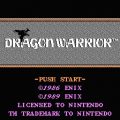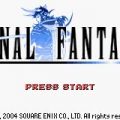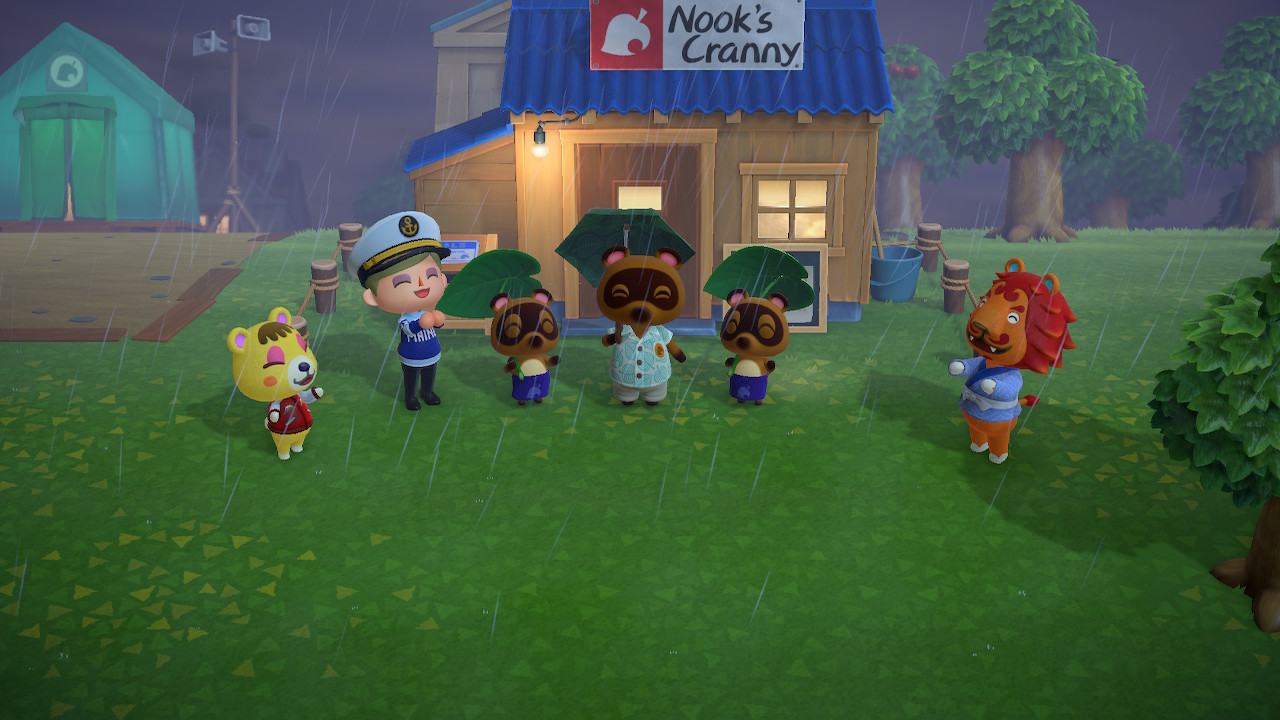Dragon Quest Retrospective – Dragon Quest II

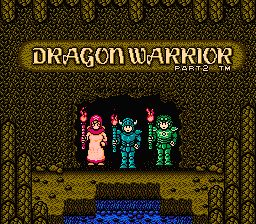 Mothers are familiar with a term known as the “terrible twos”. In the context of parenthood, the terrible twos refers to the age at which, statistically, the most tantrums happen in a developing child. In the context of video games, Final Fantasy II and Dragon Quest II are the games in each series that cause the most tantrums in the player. In some ways it feels deliberate, even though it likely wasn’t, but it’s fascinating how closely the two series mirrored each other in their development over the course of their first few years. Last week I mentioned that the games didn’t develop exactly side by side, but I’d always had the impression they did, and I feel like each game was a learning experience for both Squaresoft and Enix.
Mothers are familiar with a term known as the “terrible twos”. In the context of parenthood, the terrible twos refers to the age at which, statistically, the most tantrums happen in a developing child. In the context of video games, Final Fantasy II and Dragon Quest II are the games in each series that cause the most tantrums in the player. In some ways it feels deliberate, even though it likely wasn’t, but it’s fascinating how closely the two series mirrored each other in their development over the course of their first few years. Last week I mentioned that the games didn’t develop exactly side by side, but I’d always had the impression they did, and I feel like each game was a learning experience for both Squaresoft and Enix.
Given its head start, Dragon Quest was naturally the first of the two games to receive a sequel. It’s also startling how very different the experience of playing this game was in comparison to the original. Unlike the first game with its lone warrior traveling the land and killing things one by one, the games that inspired Dragon Quest featured teams of warriors fighting groups of enemies and now that Enix knew Japan was ready for console-based RPGs, they likely wanted to make a game that was a bit closer to Ultima and Wizardry. They knew they wanted more than just a lone warrior to travel the world in Dragon Quest II, opting for a trio this time around, and pitted their trio against many groups of enemies. The world was also expanded and players could sail it on a ship as opposed to being restricted to one continent like in the first game. This allowed Enix to create entire continents, although navigation puzzles like the rainbow bridge from the first game wouldn’t work as a result. This just meant that they had to get a little more creative, which they did.
That said, there are some glaring issues with Dragon Quest II compared to the original and it makes it seem like the sequel was rushed to market to capitalize on its success. The fact that it took only eight months to develop seems to back up this assumption.
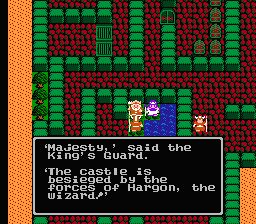 Before getting to the issues, it must be said that the game really tries to elevate the series by introducing a narrative at the beginning and showing Moonbrooke under siege. The original game depended on the player giving NPCs the benefit of the doubt and just believing that the Dragonlord was evil. It is suggested that the presence of monsters in the world is because of him and the fact that he is evil, but all the player sees the Dragonlord do is sit in his castle on his secret throne, waiting for the hero to show up. Supposedly he’s already destroyed towns, or he’s sent his minions to destroy towns, but all we see are the destroyed towns and we’re told it was his fault. We’re told he kidnapped the princess and she’s been gone for many, many months. She must’ve been kept alive somehow, which would seemingly indicate that the Dragonlord isn’t a complete monster. He also doesn’t try to stop the hero at any time, he just knows a hero is coming for him and awaits this hero with an interesting offer. We’re basically only informed that the Dragonlord is evil, we don’t get any real proof of it.
Before getting to the issues, it must be said that the game really tries to elevate the series by introducing a narrative at the beginning and showing Moonbrooke under siege. The original game depended on the player giving NPCs the benefit of the doubt and just believing that the Dragonlord was evil. It is suggested that the presence of monsters in the world is because of him and the fact that he is evil, but all the player sees the Dragonlord do is sit in his castle on his secret throne, waiting for the hero to show up. Supposedly he’s already destroyed towns, or he’s sent his minions to destroy towns, but all we see are the destroyed towns and we’re told it was his fault. We’re told he kidnapped the princess and she’s been gone for many, many months. She must’ve been kept alive somehow, which would seemingly indicate that the Dragonlord isn’t a complete monster. He also doesn’t try to stop the hero at any time, he just knows a hero is coming for him and awaits this hero with an interesting offer. We’re basically only informed that the Dragonlord is evil, we don’t get any real proof of it.
In Dragon Quest II, Hargon is a bit more proactive. His minions sack Moonbrooke and he is actually shown taking the princess away, for that’s a trope that fantasy RPGs typically favour, the kidnapping of a princess. Gwaelin was kidnapped in Dragon Quest, Sara was kidnapped in Final Fantasy, and now the Princess of Moonbrooke is kidnapped in Dragon Quest II. You could make a list of kidnapped and otherwise damseled princesses, and nearly every Final Fantasy and some Dragon Quests would be on the list.
I’ve been calling her The Princess of Moonbrooke so far and yes, she has a name. It’s just that, it’s not known at this point what her name is. Let me explain. Remember when I said that names are important in the Dragon Quest series? And in the first game, your name determined your growth? In the second game, your name determines the names of your two cousins, the Prince of Cannock and the Princess of Moonbrooke. These cousins become your other two party members and once your quest to meet up with them ends, they’re with you for the rest of the game as you attempt to save the world from Hargon.
This is, by the way. the only time we see Hargon in action. After that, he waits upon his secret throne waiting for the heroes to show up.
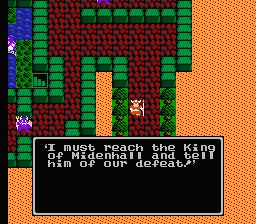 The Calling of the Three…
The Calling of the Three…
As the game opens and the siege of Moonbrooke occurs, a lone soldier manages to bring word to the kingdom of Midenhall. CW, the prince of Midenhall, is sent to meet up with the Prince of Cannock in order to investigate what happened. In my own personal head canon, CW’s name has been passed down through his family line, all the way back to the explorer who discovered the land about a century ago, along with his traveling companion Gwaelin. One questions the wisdom of King Lorik of Tantegel letting his daughter go when we never see the queen of the kingdom, nor anyone who can provide him another heir. I’m getting a little ahead of myself, though.
One thing I appreciate about the game is that while CW is solo, the game’s balanced so that only a few weak enemies attack him at most. Just like in the first game, players are eased into the game’s difficulty by encouraging them to fight enemies around their home castle and to constantly rest up until they’re level three or so. In a sense, it’s meant to get players used to the experience of the sequel without tossing them into the deep end right away. There’s plenty of time for the game to try to overwhelm and drown them later. From there, the walk from Midenhall to Cannock is enough to grant CW a few more levels of experience, and the start of his experience curve is shallow enough that he can even grind on purpose for a little while if he wants to before he meets his cousin.
When the main character’s named CW, the prince of Cannock is named Talint. It takes quite a few trips back and forth between Midenhall and Cannock before CW and Talint finally meet up in Leftwyne. It’s a little frustrating that you’re told to go to one place, then another, then another, constantly missing your cousin in the process like a demented version of the Polka Dot Door and he’s the Polkaroo. It doesn’t help that the king of Midenhall lets you know at the end of the hunt for Talint that he’s heading to Midenhall when he’s actually heading to Leftwyne, so even the instructions are hilariously wrong.
When CW finally catches up to Talint after being lead on a wild goose chase to Cannock, then into a dungeon, then down to Midenhall, then over to Leftwyne, Talint is still somehow at level one. This doesn’t actually bode well for his usefulness. The only way for him to have still been at level one would be if he ran from every possible battle up to this point. I suppose that should’ve been a prime indication of how Talint-less he actually is. Once he joins forces with the main hero, he gains three levels within the first couple minutes and continues to gain levels at a decent pace through the second dungeon.
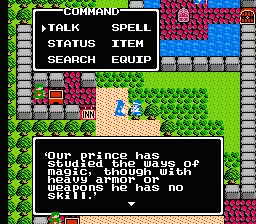 His inability to equip the same strong armour that CW can is a detriment to his survivability. One also notices, with Talint in the party, how less generous Dragon Quest II is with a character’s stat growth compared to the hero of the first game. A group of baboons against CW and Talint at level fourteen is just as potentially lethal as a group of baboons at level eight. The first few levels gained at the start of the game are enough to let CW get by and reach a point where the slimes and slugs surrounding his home are no longer as much of a threat. However, Talint doesn’t have the same advantage. As he can only equip relatively light armour, he must be babysat a lot and it’s not uncommon for players to have to go back to town and spend a couple hundred or more gold pieces to resurrect him and then stay at the inn to bring his HP back up to full. It’s a small price to pay in comparison to losing half of your total gold pieces if the entire party dies, but it’s a bit frustrating when trying to advance in the game and a group of baboons drops Talint in one turn.
His inability to equip the same strong armour that CW can is a detriment to his survivability. One also notices, with Talint in the party, how less generous Dragon Quest II is with a character’s stat growth compared to the hero of the first game. A group of baboons against CW and Talint at level fourteen is just as potentially lethal as a group of baboons at level eight. The first few levels gained at the start of the game are enough to let CW get by and reach a point where the slimes and slugs surrounding his home are no longer as much of a threat. However, Talint doesn’t have the same advantage. As he can only equip relatively light armour, he must be babysat a lot and it’s not uncommon for players to have to go back to town and spend a couple hundred or more gold pieces to resurrect him and then stay at the inn to bring his HP back up to full. It’s a small price to pay in comparison to losing half of your total gold pieces if the entire party dies, but it’s a bit frustrating when trying to advance in the game and a group of baboons drops Talint in one turn.
One might think that a lot of grinding is the obvious solution, since players had to grind for 95% of the first game, but as has been said, stat growth just isn’t worth it at this point and players might as well try to continue the quest, for the Princess of Moonbrooke is out there somewhere and might help make things a bit easier for CW and Talint.
The game doesn’t make finding the princess that big a deal, since once you have Talint in your party, unless you head over to Moonbrooke, you won’t realize that discovering what happened to her is the next step in your quest, and you might even find this out by accident. Clever players will hear about the Mirror of Ra and will use other hints to figure out that they should find the Mirror and use it on a dog that happens to follow the player in Hamlin. The Mirror will show the dog’s reflection as the princess and then this will cause it to shatter and restore her to her human form. Kailin will be so grateful to you that she’ll come along and help you. Either that or she still feels a dog’s sense of loyalty and friendliness and wants to tag along and be a good girl for you. The game doesn’t spell out for the player just how long she was stuck in the form of a dog.
Kailin’s growth is slower than Talint’s, unfortunately, so it isn’t really worth trying to build her up beyond level three or four before continuing on your way. It’s here that I probably should describe the differences in each character and what they bring to the party.
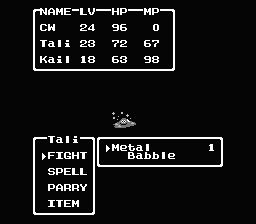 CW, the Prince of Midenhall, is a strictly physical warrior, the only “main character” in the entire series who is incapable of casting magic of any kind. He doesn’t have an MP stat and must get by with swords alone. Unfortunately for his cousins, the game is balanced around challenging him, so both Talint and Kailin are going to lag way behind in power for the majority of the game.
CW, the Prince of Midenhall, is a strictly physical warrior, the only “main character” in the entire series who is incapable of casting magic of any kind. He doesn’t have an MP stat and must get by with swords alone. Unfortunately for his cousins, the game is balanced around challenging him, so both Talint and Kailin are going to lag way behind in power for the majority of the game.
Talint of Cannock is the classic hero type in the games, with equal amounts magic and strength. He’s the type of character that a game would usually be balanced around, but here in Dragon Quest II, his strength is typically somewhere between CW and Kailin and even late in the game, he only had about half the strength CW did until the very end when he began to gain power very quickly. If I were to grind for a little bit longer than I did, he would’ve had enough strength to actually deal significant damage to certain high defense enemies we encounter throughout the game, like Metal enemies and Attackbots. He also has much less MP than Kailin, which also limits his capabilities as a spell caster.
Talint’s spells include Heal and HealMore, but not HealAll. He also gains Antidote (valuable for when a player is poisoned, as this frees up space in the game’s limited inventory so that Antidote Herbs no longer need to be carried) and Revive although he cannot restore players to life during battle.
He gains Return, Outside and StepGuard, three useful spells for navigation. Outside removes the party from a dungeon and Return brings them back to the last town in which they saved the game. This is very useful when the game’s balance goes a bit haywire and players need to constantly refill their MP while trying to get through the last few dungeons. StepGuard basically guards players from certain damage tiles although it resets every time the player steps on a safe tile because the developers hate you.
Talint gains the game’s only buff spell, Increase. Increase shores up the party’s defense against physical attacks, although in my experience it didn’t do a lot to shield players from the truly powerful enemies. By the time Increase feels like it should be required, enemies are casting powerful magic spells or have pretty high attack and casting this spell several times didn’t do a lot to reduce the damage taken. Increase also only raised defense about 10-20 points per cast, sometimes less. Given that defense is relatively low in the game anyway, this should’ve significantly increased the party’s survivability, but it really didn’t.
Talint gains StopSpell, which silences enemy casters, but doesn’t always work and it definitely doesn’t stop enemies that can blow sleep-inducing breath on the party. It also doesn’t seem to work on certain enemies that can cast the Defeat spell on the group. You’d think, with how useful StopSpell was against enemies with the Sleep spell in the first game, that the developers would let you avoid Defeat with it, but in my experience this never worked.
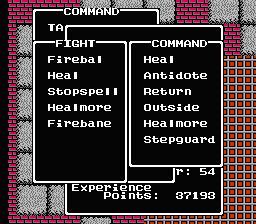 Talint brings with him several offensive spells, but not all of them are very useful. He learns Firebal (this is not a typo) which shoots a firebal, I guess, at a single enemy. This spell is easily outclassed by Firebane, which hits all enemies for a slightly bit more damage than Firebal. This is decent in that it’s one of the game’s very few area of effect abilities.
Talint brings with him several offensive spells, but not all of them are very useful. He learns Firebal (this is not a typo) which shoots a firebal, I guess, at a single enemy. This spell is easily outclassed by Firebane, which hits all enemies for a slightly bit more damage than Firebal. This is decent in that it’s one of the game’s very few area of effect abilities.
His other two offensive abilities are rubbish, though. Defeat will try to instantly kill a group of enemies but will fail often and it seems like a waste of a turn when Talint could just try to kill them the normal way. Sacrifice has a much higher success rate in that it guarantees the enemies will all die, but it also kills Talint so he gains no experience from the battle and he’ll require a Leaf of the World Tree to return to life since he’s also the only one with the Revive spell. He’s also the only one with the Return spell, so using Sacrifice would seem like the last desperate move of a party backed into a corner, who might not want to lose half their gold and be taken away to the last town they saved, halfway across the map from where they need to be.
The game should’ve been balanced around Talint rather than CW. As a result, Talint is very susceptible to being killed, somehow even more susceptible to it than Kailin, who has less HP and less defense than he does until late in the game when she catches up in defense and only has a small handful less HP than him.
Kailin of Moonbrooke has a very sharp experience curve, perhaps because she joins when enemy groups are already giving a hundred or more experience per battle. She can equip very few pieces of gear and exceedingly few weapons, for she is meant to be the group’s spell caster. Her power lags way behind even Talint, and will often do no physical damage against enemies throughout the entire game. Instead, her MP is very high compared to Talint and she gains many useful spells.
She joins with HealMore, so already she’s incredibly useful; Talint has to wait until he’s level fourteen before he can offer the same. She also learns Antidote, but not for a while and so Talint is typically the character eliminating poison from the party. Instead of the basic Heal spell, Kailin learns HealAll, which heals a character back to full and which obviously becomes more and more powerful the more HP a character has. CW has the potential to possess over 200 HP in this game by the time he faces Hargon and being dropped down to 20 or so HP, only to be healed back up to 200, is awesome.
Like Talint, Kailin learns Outside and StepGuard. Some of the overlap between her and Talint would seem to indicate that the developers of this game had the same trouble coming up with useful spells that Square did when they developed Final Fantasy. The eight month development cycle must not have helped one bit.
Along with those two spells, Kailin also learns Repel and Open. Repel keeps weaker enemies away, but just like in the first game, this only works on the overworld and doesn’t seem to work in dungeons. Repel also didn’t work on the way to Hargon’s castle, but it worked wonders when having to restart a couple dungeons near the end of the game that could’ve been balanced a little bit better. Open, meanwhile, replaces the three keys in your inventory, freeing up space because otherwise the party doesn’t have a lot of room left for things.
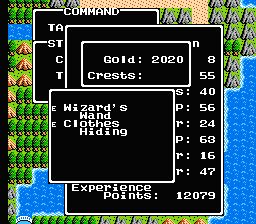
Kailin learns several spells that are meant to help the party out during battle. She learns Sleep, which has about the same amount of success as in the first game, and doesn’t work against the enemies you really wish it would. She learns Surround, which reduces the accuracy of enemies by about 25%, although this means they miss about one in every four hits they try to make, so succeeding with this spell can sometimes make no difference in battle. Defense lowers the defense of enemies and unlike Increase, I could immediately tell a difference in the amount of damage I was doing. The effect also stacks, so against a tough enemy, it was usually good to have Kailin cast Defense every turn.
One spell I never used was Chance because it’s relatively expensive and doesn’t always produce a good result. When trying to conserve MP in dungeons, it seemed much better to just cast an offensive spell rather than Chance, and admittedly I never even bothered to use it even once.
Although Kailin only has two offensive spells, I would liken her to the group’s Black Mage and the group’s White Mage all in one, due to having both the best healing and damage dealing spells in the game. She learns Infernos rather early in her journey, which targets one group of enemies. This means that sometimes, if the game counts enemies as being in two distinct groups rather than all in one group, Infernos won’t always hit everyone.
It isn’t until she reaches level nineteen that she really comes into her own as a Black Mage style spell caster, when she learns Explodet. This spell does massive damage and hits everyone, I would compare it to Flare from Final Fantasy. Explodet is also relatively cheap. Late in the game when she has 150 or more MP, Explodet’s cost of 8 MP means she’ll be casting it in nearly every battle when she’s not casting Defense to make Attackbots easier to kill.
I appreciate that by the time the party faces groups of five Dragon Flies, Talint has Firebane and Kailin has Infernos, and that both spells are geared to help fight them. The trouble is, fighting Dragon Flies helps to highlight one of the main problems of this second Dragon Quest game, a problem that didn’t exist in the first one.
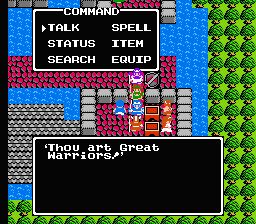 You see, the downside to balancing the game around CW is that there are enemies that will silence Talint and Kailin’s spells, which effectively remove Kailin from the battle entirely and will force Talint to have to use his low physical strength on enemies. CW ends up carrying the group through these battles, turning the game back into the solo adventure that the first game was.
You see, the downside to balancing the game around CW is that there are enemies that will silence Talint and Kailin’s spells, which effectively remove Kailin from the battle entirely and will force Talint to have to use his low physical strength on enemies. CW ends up carrying the group through these battles, turning the game back into the solo adventure that the first game was.
Why is this an annoyance for the player? In the first Dragon Quest, the player and his enemy literally take turns attacking each other, there is no agility to govern who goes first. Turns are always player, enemy, player, enemy, where occasionally the enemy gets the drop on the player at the beginning of the battle. Not so in Dragon Quest II. Here, enemy and ally take turns based on what seems to be random chance. Sometimes all allies will get their turns in first, sometimes (read: a lot of the time) the enemies will. Nothing’s worse than telling Talint and Kailin to use their area of effect spells on a group of Dragon Flies, then watching as all five Dragon Flies take their turns first, killing Kailin. Then in turn two, they all take their turns first again, wiping the rest of the party and costing the player several thousand gold pieces. It makes exploring the tower immediately south of Alefgard a horrendous chore.
As you can imagine, if an enemy has StopSpell, odds are pretty good that they’ll get their turn in before Talint and Kailin and nothing causes a terrible twos tantrum more than having both of them silenced before they can take their turn.
The game was balanced pretty lousily anyway. A very good example comes near the end of the game, with enemies who have unblockable instant death spells, the only defense against them being hoping that the game doesn’t decide the spell was successful. There is a random chance to die when an enemy casts Defeat on you, and a guaranteed death when an enemy casts Sacrifice on you. At least players can level up over the course of many hours and gain enough HP to survive the Dragon Flies. Not even leveling up will help against Defeat and Sacrifice, players have no way to prevent either spell from killing them, even at full health.
As was my conclusion when playing the first game, it’s almost as if random chance was the main idea behind the development of Dragon Quest II, and from a western standpoint, that’s poor game design. Maybe the Japanese like to work hard and achieve success in games such as this, but making a video game where reaching the end is literally a function of how long you can roll a set of dice against the RNG before you lose patience and decide to play a different game is not something most people in the west find enjoyable. “Sorry, you died because fuck you” makes for a frustrating game. Not even Dark Souls is that sadistic.
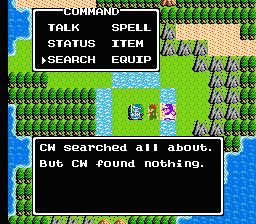 Things Improved, Things Removed…
Things Improved, Things Removed…
There is a point after getting the ship where players can arrive in Alefgard and familiar music plays. This must’ve been amazing for players in 1987, not only because it’s the familiar land they got to know and love, but also because the music from the first game plays while exploring this continent. However, as players make their way around Alefgard, they notice that all of the towns are missing, and the encounters found there are much tougher than they were for the lone warrior. Perhaps it was a bad idea for King Lorik to allow Gwaelin to leave the kingdom, for it seems like monsters have overrun the place. Upon reaching the starting castle from the first game, it’s made very clear that it and the nearby village needed to merge together in order to survive, for this is the only inhabited place in the entire continent other than the Dragonlord’s castle. In a way, it’s a bit sad to realize that you saved Alefgard and by extension the world, only to let the continent fall to ruin in the century since.
I love how page 15 of the manual reads like the patch notes to a quality of life upgrade. “There is no longer the need to select the STAIRS command” the manual reads. “You can walk to and down the stairs by moving your character through the stairway.” The TAKE command has been folded into the SEARCH command. DOOR has been replaced by a system of keys, all three of which are permanent in the inventory until you receive the Open spell and can throw the keys away. And one more patch note removes torches from the series. “Although you will enter caves, you will no longer need a torch to be able to see your surroundings.” Torch was rendered obsolete in the first game fairly early anyway with the much better Radiant spell, so removing this was inevitable.
Unfortunately, there is one major nerf between the first and the second game. Perhaps because there are three party members now, the way inventory and equipment is handled is very different. Armour and weapons are a part of a character’s inventory, and this wouldn’t be that much of an issue except that consumable items take up one space each rather than having a slot for all herbs like in the first game. Once the player starts picking up keys, they also take up space in the inventory.
Something else that takes up space in the inventory is the Echoing Flute, and given how important it is in the search for the crests, it’s likely the Flute was intended to be found at around the same time as the Golden Key. Surely the developers wouldn’t make everyone go back to each and every town and dungeon and shrine in the world three times (one each for the Golden and Jailor’s Keys (also not a typo) and then one more time for the Echoing Flute). Right?
Right?!
Compared to the smaller world and the ways in which information is conveyed to the player in the first game, Dragon Quest II is larger, takes longer to navigate around once players have the proper keys to unlock everything, and information is not conveyed in as easy a manner. The developers might assume that they’ve given players all they need with the Echoing Flute and the vague hints the fortune teller gives, and technically speaking, that is true. This game is meant to not be rushed through. Players need to go around the world several times to seek out the key items they need to continue their adventure. The Golden Key eventually helps players receive the Jailor’s Key, if players search every nook and cranny and eventually put two and two together in an out of the way place to purchase the key. The Jailor’s Key leads to the Watergate Key, but only if players are clever. If they’re not, it can take a long time to find. But it’s at that point that, if players have been unlocking all the doors and blowing the Flute wherever they can, they’ll have four of the five Crests and know where to find the fifth one. They’ll also have the Watergate Key and all the hints required to follow up on the last clues required to unlock the Cave to Rhone and make the final push to defeat Hargon.
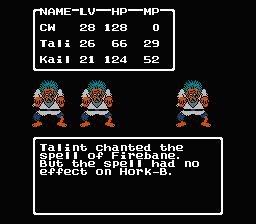 …Things Impaired and Things Despaired
…Things Impaired and Things Despaired
And this is where the game drives itself off a cliff. Maybe eight months was too tight a development period. Dragon Quest II needed a bit more work at the end. Or maybe it was always meant to be this nasty in its mission to screw the player over.
Everything up until the cave in the middle of the ocean is great. The game’s balanced not too badly even if there are a few annoyances along the way. But upon entering this cave, things go from alright to pretty bad. Not right away, mind. The dungeon begins with a series of tunnels with many forks in the path, but it’s not that bad compared to previous dungeons; the first floor isn’t that bad. The next floor, however, contains many stairs that will circle back to different portions of this floor and none of which seem to progress the player. It turns out there’s a tunnel covered in damaging lava that players must choose and it’s this tunnel that leads to the correct set of stairs.
Once through a door, players find themselves in another tunnel with more stairs leading down and will eventually find themselves in a room full of these downward-leading stairs. All of these are red herrings. Pick one, it doesn’t matter which, and players will find themselves in another room full of upward-leading stairs. Again, these are all red herrings designed to confuse and frustrate. Here, players need to venture into the lava and find the lone set of stairs leading downward. From there, there’s a scripted battle and then a treasure chest containing the Eye of Malroth.
This artifact opens up the Cave to Rhone, sometimes called the Road to Rhone. When it comes to trial and error gameplay, this cave is the worst for it. The first floor consists of three sets of stairs going up and four sets of stairs going down. The Life Crest is in the basement, but this basement is crawling with Horks and only Horks. Horks have the ability to put the party to sleep with their breath and to randomly poison with their physical hits. They also will attack in groups and have high enough HP that it takes a few hits to take them down. It’s not uncommon to be attacked several steps in a row in this basement, making it very frustrating to navigate.
Once players have the Life Crest, they have to make it out of the basement and then they have to make it to the bottom right of the first floor and climb this set of stairs. The top right of the room contains a set of stairs that ultimately leads nowhere, but both the middle of the room and the bottom right contain stairs that lead to a floor that looks identical but one copy of this floor did not contain a set of stairs going forward to the third floor and the other did. Oh, and before I forget, there are pitfalls on the first floor that will send players back down to the basement where they’ll have to fight their way through the Horks again.
The third floor is basically one long tunnel, explored basically the same way as tunnels have been explored before. It’s not that bad, except that one way ultimately leads to dead ends and the other way eventually leads to the proper set of stairs going up.
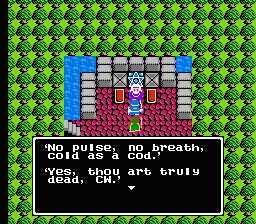 The fourth floor is a room so chock full of pitfalls that it’s near impossible to remember them all. This room basically requires trial and error to get to the next set of stairs and falling into a pitfall will send players to a large room with only one set of stairs leading up, in the top right of the room. This leads into a medium-sized room that itself leads to the very top of the fourth floor, which has to then be navigated in its entirety just to get back to where players started. The stairs leading up are practically surrounded by pitfalls, which hinder the player greatly and caused me to have to cast Outside and Return too many times to count due to almost running out of MP, but once these hazards are finally left behind, there’s one more complication players have to contend with.
The fourth floor is a room so chock full of pitfalls that it’s near impossible to remember them all. This room basically requires trial and error to get to the next set of stairs and falling into a pitfall will send players to a large room with only one set of stairs leading up, in the top right of the room. This leads into a medium-sized room that itself leads to the very top of the fourth floor, which has to then be navigated in its entirety just to get back to where players started. The stairs leading up are practically surrounded by pitfalls, which hinder the player greatly and caused me to have to cast Outside and Return too many times to count due to almost running out of MP, but once these hazards are finally left behind, there’s one more complication players have to contend with.
The fifth floor is full of forks in the tunnel, but these forks are not fair to the player and do not lead to dead ends. Instead, choosing the wrong fork will set players back in their progress trying to navigate this tunnel, teleporting them to an earlier portion and forcing them to renavigate their way back to the fork where they have to choose the correct path through. If players manage to figure out the correct path, they’ll find themselves out of the Road to Rhone and in a snowy landscape high up in the mountains.
Unfortunately, players still have to actually reach Rhone, for if they’re defeated before they get there, they’re sent all the way back to the town they last saved the game at and must make their way through the Road to Rhone once more.
When I first played the game many years ago, I was put off by the gauntlet players have to run to get from Rhone to Hargon’s castle, full of enemies that can one-shot the party with unblockable spells. This consists of Blizzards that can cast Defeat and Gold Batboons that can cast Sacrifice. In practice, Defeat doesn’t have as high a success rate as players will say it has, but the sheer amount of times you face Blizzards, and they seem to cast either Defeat or Defense in equal measure, means that at some point during the trip to the castle, one of these Defeat spells will kill at least one member of the party. Gold Batboons, though, have the ability to cast Sacrifice and this is a spell that kills the caster but also kills the entire party with no chance of defending against it, sending you right back to Rhone. Gold Batboons also have an ability to breathe sleep-inducing breath on the party, which if they do it enough times, will prolong the battle and increase the odds of Sacrifice being cast. It’s not fun to have to face either of these groups in combat, knowing there’s not a lot you can do to defend yourself against them. You can’t even guarantee that using StopSpell on the Gold Batboons will work – they are susceptible to it – considering any of them could go first and put Talint to sleep.
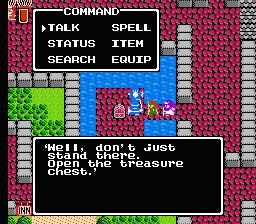
The Numbers Game
This game is probably the most blatant game I’ve ever played when it comes to the imbalance between each character’s experience curve and their usefulness in battle. At about the time when CW was level 36, Talint was level 33 and Kailin was level 28, CW was still only requiring about 30000 experience points to get to his next level, but the other two characters were requiring 50000 or more points to gain one level. What’s worse, CW had a much higher attack than the other two, and the fact that they could cast magic was of little help since some enemies on the way to Hargon’s castle are immune to most magic, including spells that would’ve been a major help like Sleep and StopSpell, with few exceptions like the Gold Batboons previously mentioned. Of the spells that they’re not automatically immune to, they still were able to avoid taking damage from spells like Explodet a bit more than I would’ve liked. As has been mentioned already, Kailin’s attack stat was constantly so low that if an enemy cast StopSpell on her, she was completely useless, and Talint wasn’t all that better off with his attack stat being about half of CW’s until right near the end.
It takes so much magic to run the gauntlet to the castle that I eventually decided to just grind to 35 and use Repel. That didn’t work so I grinded some more to get to 40 first and that still didn’t work. I knew I’d need all the magic I could get in order to make it through Hargon’s castle, and using it all up just getting there would do me no good if I just Returned to Rhone and had to try again anyway. During all of this grinding, I already possessed the game’s maximum allowable amount of gold pieces, so I estimate that I may have left another full wallet’s worth of gold on the ground. This was after I’d already used up nearly a full wallet’s worth of gold pieces buying a Mink Coat for Talint to shore up his defense a little bit, but even then, he ended up dying a few times afterwards and he’s the one with the Revive spell *and* the Return spell, so I was always having to manually travel back to Rhone to bring him back to life. Fortunately, although I wonder if it was even necessary to give players this mercy, reviving characters at Rhone is free, as is restoring health.
The reason 65535 is the highest your wallet can go in Dragon Quest and Dragon Quest II, as well as the highest your experience points can go in Dragon Quest is because it’s one less than 2 to the 16th power. This is significant in computer science because the games were programmed to only store up to “1111111111111111” of these values, and any higher would require more memory than was allotted to them. What’s interesting is that this 65535 limit also extends to the dialogue letting players know how much experience is required to reach the next level. I reached the point during my end game level grind where Kailin’s requirement to level up skyrocketed from 30000 points per level to 40000 for level 28, 50000 for level 29 and 90000 for level 30. (Actually, it was all over the place. Level 22 required 30000, level 23 required 40000 and level 24 required 50000 before the curve flattened a bit and she required 30000 points per level for a while. I got no sense that the princess of Moonbrooke’s growth was balanced at all.) Due to the game being unable to display required experience higher than 65535, the number will loop back to zero and instead of telling players that she needs 90000 points, it would tell players she needs 24465, which gives players a false sense that the curve has once again flattened when it has, in fact, not.
Interestingly enough, the game does display each character’s accumulated experience correctly.
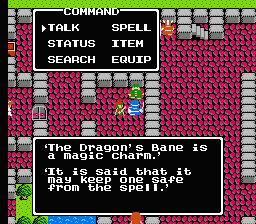
In Conclusion
Perhaps the game’s difficulty would’ve been toned down a bit if the developers had fully tested the ending. Dragon Quest II was delayed from its initial November release date, which would’ve given the game only six months of development, in order to adjust its balance. The popular consensus among fans is that the ending wasn’t fully adjusted before the game shipped. However, I sometimes wonder if fans just assume the final area wasn’t fully tested and balanced. Perhaps instead, Dragon Quest II was fully tested and the developers decided that players would definitely like trial and error gameplay followed by a gauntlet of enemies that could randomly kill players through no fault of their own and whose toughness escalated very quickly, requiring hours and hours of grinding in order to stand a fighting chance of making it through. It’s entirely possible that Dragon Quest II was meant to end this way but that developers decided to reign themselves in for later installments in the series, having used this game to exhaust all of their ideas for how to thoroughly and brutally punish players.
I suppose at this point, it’s hard to really know for sure what the intention of the developers was back then. Maybe they genuinely did think it was a good idea to give enemies the ability to kill players from full health and send them back to Rhone. Maybe they genuinely did think it was a good idea to design dungeons that punish players for guessing the wrong route through with no hints to go by. Maybe they genuinely did think that forcing players to cast StepGuard several times on one floor in Hargon’s castle was good level design…
But whose idea was it to give Hargon, the penultimate boss of the game, the HealAll spell?!
In the end, Dragon Quest II is an experience. That’s the best way I can describe it. It’s an experience. It starts off well but eventually the game throws a bunch of nasty surprises and frustrations at players and expects that they’ll be okay with them. This might’ve been okay in Japan, but that sort of gameplay doesn’t endear itself to North American players and it’s no wonder the series sharply declined in popularity here. It arguably wasn’t all that popular in the first place, since the first game didn’t sell well and had to be given away. The tragedy is that the game that should’ve sold the best on the NES (Dragon Quest IV) instead sold the worst and the series died for a while in North America. But that’s a story for another time.
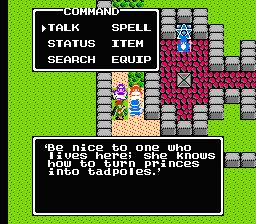
Next week: Squaresoft’s terrible two.

